Reviews
Gojira tai SupesuGojira
Kensho Yamashita
Japan, 1994
Credits
Review by Leo Goldsmith
Posted on 21 February 2013
Source Crackle.com streaming video
Categories The Compleat Godzilla
By the time of Godzilla’s twenty-first film outing, it would be difficult to imagine the monster encountering another truly novel opponent. Certainly the titular combatant of 1989’s Godzilla vs. Biollante, the fruit of a project in which producer Tomoyuki Tanaka crowdsourced script ideas from the public, would seem to be one of the last of the great kaiju, a fresh conflict amid a long string of re-matches and warmed-over characters.
But this is what makes the wonderfully, redundantly titled Godzilla vs. SpaceGodzilla such a curious object, and its principle antagonist, a leftover idea from the twilight of the Showa era, so memorable. SpaceGodzilla is a malevolent and hugely powerful space monster, a mutation bred from “G-cells” inadvertently sent into outer space - either at the end of Godzilla vs. Biollante or in 1992’s Godzilla vs. Mothra - that were swallowed by a black hole, spit out by a white hole, and subjected to intense energy forces, resulting in what the film’s characters imply is the worst monster ever. He can fly through space and hover in Earth’s atmosphere, emit his own atomic breath and levitate large objects (or rival monsters) with a gravity beam, form huge structures of space-crystals to use either as a shield against harm or as a trap for other monsters, and has two fearsome looking back-horns. When first seen at the film’s outset, huddled in a spiky nest of space-crystals and hurtling through the galaxy, he is instantly recognizable as a formidable villain—and as a ripely toyetic subject. Indeed, even if he has only appeared in just one (rather poorly received) Godzilla film, and made other appearances in spin-off video games, SpaceGodzilla is nonetheless as memorable a monster as Godzilla has faced, and this memorability is perhaps fittingly established in his legacy as a highly successful action figure.
It’s a bit strange, then, that the film in which he appears so underutilizes him, seeming to focus more on human characters like Miki and the G-Force team than on what might otherwise have been an epic head-to-head between Godzilla and his extraterrestrial mutant namesake. Instead, we begin with human concerns, namely a two-pronged plan by G-Force to combat Godzilla’s threat on Earth. The first of these prongs is Project T, a plan which enlists young Miki to use her psychic power to control Godzilla’s body via a telepathic transmitter to be placed on the back of the monster’s head. The second prong is rather more blunt and requires hardware: to use the wreckage of Mechagodzilla to construct a Mobile Operation Godzilla Universal Expert Robot Aero-type - which it is easier to just call “MOGUERA” - a robot that, strangely enough, the film borrows from Ishiro Honda’s 1957 film The Mysterians. (The humans also have a lot of machine guns, no doubt a hold-over of late-80s action-movie gun fetishism.)
At first, Miki is reluctant to take part in Project T, which she considers both implausible and inhumane, until she learns of the threat of SpaceGodzilla, first via her earrings, which are in direct touch with a flock of Mothras in space, and then by a visit from the twin fairies, who tell her in no uncertain terms that “a terrible space monster is threatening the Earth!” NASA soon gets the tip-off too, when one of their spacecraft is attacked by something that, according to them, “We can only speculate… was some kind of huge monster.” This initiates an exploratory mission by MOGUERA, followed by an entertainingly low-tech-looking space battle with the monster amid papier-maché asteroids.
This skirmish fails to delay SpaceGodzilla’s arrival on Earth, and once there we are finally treated to a Godzilla-SpaceGodzilla first encounter when the alien kaiju threatens a pathetic, whimpering bug-eyed Baby Godzilla and its more dignified relative protectively steps in. This match is largely unsatisfying, however: Baby G is merely locked in SpaceGodzilla’s space-crystal trap (and not torn into to massive, bloody filets, as one might wish), and the tussle with Godzilla is mainly conducted via radioactive breath rather than hand-to-hand combat or energetic body-slams. For this satisfaction we must wait through an additional half an hour of human plot, as G-Force gradually realizes they must use MOGUERA (which, it turns out, can split into two modules - a tank and a jet - and then Voltron back together again) to help Godzilla fight the real enemy.
This climactic scene takes place in the city of Fukuoka amid a fascinatingly awkward orgy of ’90s green-screen technology and good old-fashioned rubber tailoring. Here, SpaceGodzilla totally dominates the cityscape, setting up a massive palace of space-crystal stalagmites and drawing energy from the famed Fukuoka Tower (which of course is eventually smashed to bits). And while there is an overall lack of excitement to this battle - SpaceGodzilla’s flying abilities seem unlikely for such an ungainly creature, and the gravity-beam effect, whereby he handslessly “picks up” Godzilla and then smashes him into a skyscraper, certainly strains credulity - the film nonetheless delivers on anonymous citizens fleeing in terror, roaring beasts blasting and beating the hell out of each other, and iconic landmarks and urban infrastructure being utterly devastated. If the film itself isn’t among the best of the series, one can at very least prolong this pleasure indefinitely once the film is over—with the aid of a couple of fully detailed action figures.
More The Compleat Godzilla
-
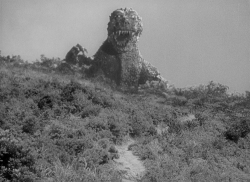
Godzilla
1954 -
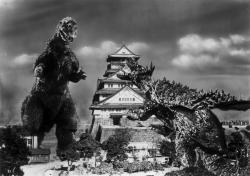
Godzilla Raids Again
1955 -
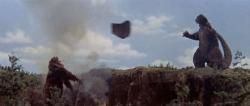
King Kong vs. Godzilla
1962 -
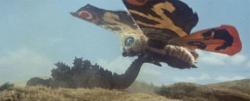
Mothra vs. Godzilla
1964 -
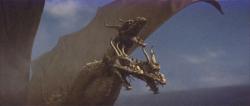
Ghidorah, the Three-Headed Monster
1964 -
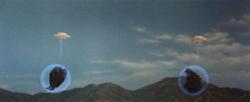
Invasion of Astro-Monster
1965 -

Ebirah, Horror of the Deep
1966 -
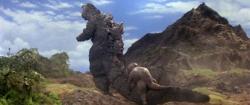
Son of Godzilla
1967 -
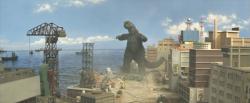
Destroy All Monsters!
1968 -
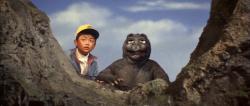
All Monsters Attack
1969 -
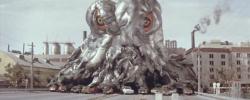
Godzilla Vs. Hedorah
1971 -
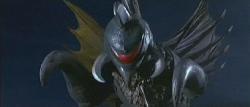
Godzilla vs. Gigan
1972 -
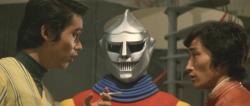
Godzilla vs. Megalon
1973 -
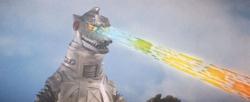
Godzilla vs. Mechagodzilla
1974 -
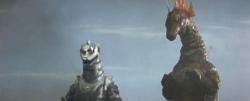
Terror of Mechagodzilla
1975 -
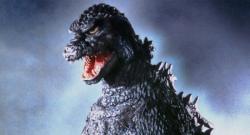
The Return of Godzilla
1984 -
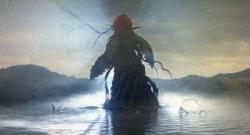
Godzilla vs. Biollante
1989 -
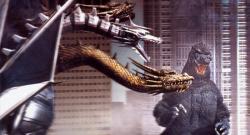
Godzilla vs. King Ghidorah
1991 -
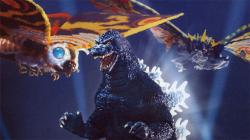
Godzilla vs. Mothra
1992 -
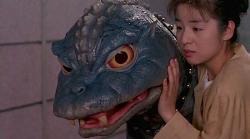
Godzilla vs. Mechagodzilla
1993 -
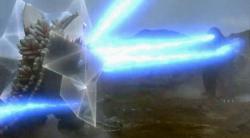
Godzilla vs. SpaceGodzilla
1994 -
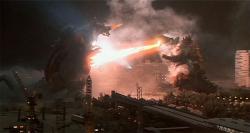
Godzilla vs. Destoroyah
1995 -
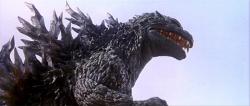
Godzilla 2000
1999 -
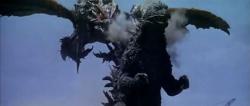
Godzilla vs. Megaguirus
2000 -
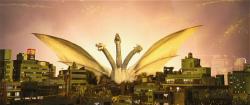
Godzilla, Mothra and King Ghidorah: Giant Monsters All-Out Attack
2001 -
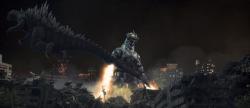
Godzilla Against Mechagodzilla
2002 -
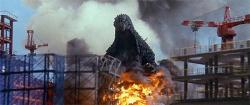
Godzilla: Tokyo S.O.S.
2003 -
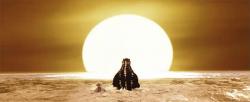
Godzilla: Final Wars
2004
We don’t do comments anymore, but you may contact us here or find us on Twitter or Facebook.



